さあ!本番!サマーセール!TOY CAR LAND+ Rittoより
2012年08月17日

☆サマーセール!第2弾!!☆
TOY CAR LAND 栗東店より
休み明けのオープニング企画!
今度は、アルファロメオ!
この147!
贅沢にも、ハイグレードモデル!
TIグレードモデルをベースカーに
新品エアロパーツ一式
新品アルミMODA
新品タイヤ
新品サススプリングを
カスタマイズしております。
この147Tiセレスピード
サマーセール価格に!
限定1台限りの特別車なので
お見逃し無く!ですっ
新品オプション総額
約45万円!も
この価格に含みまして・・・
本体147万円→
127万円!
サマーセール価格!
とっても、お買い得に
価格設定中〜!
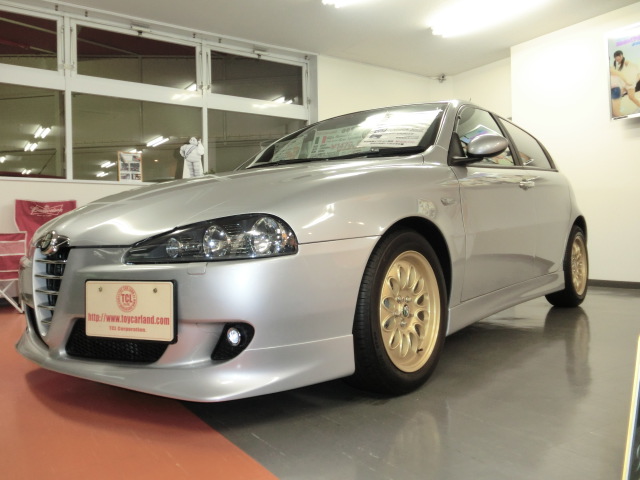

Tiモデルですので
スポーツレザーシートも
キセノンヘッドライトも
リアスポイラーも
そろって装備されているところも
ポイントですね。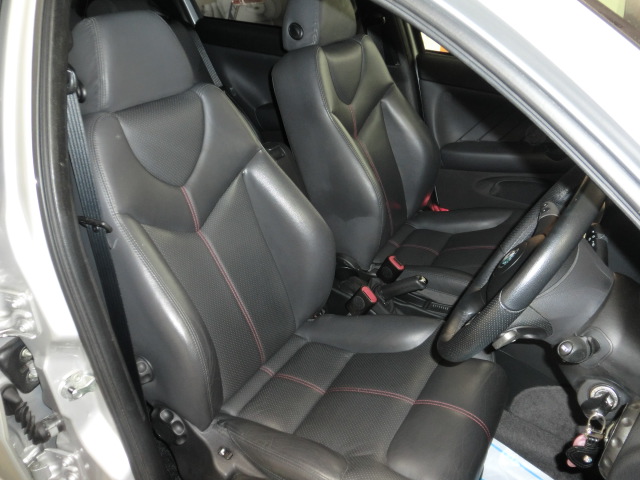
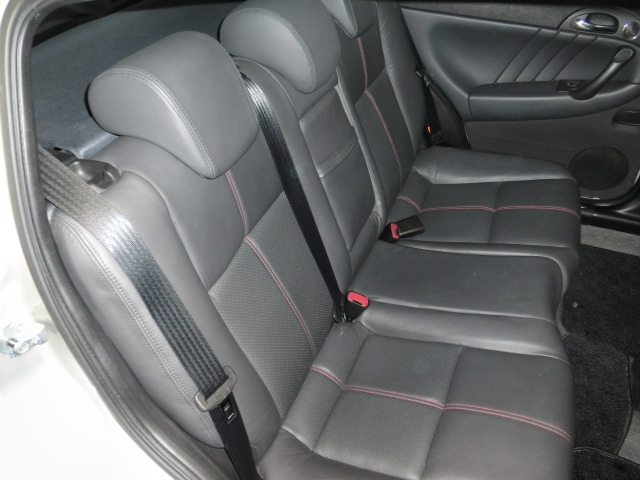
それでもって!
まだありますっ
ウレシイポイント!
HDDナビもETCも装備しておりますー。
147の2ディンナビキットは
結構高くついてしまいますので
ポイント高いですね。

ルームランプは
LEDに!
他の147に差をつけましょう〜♪
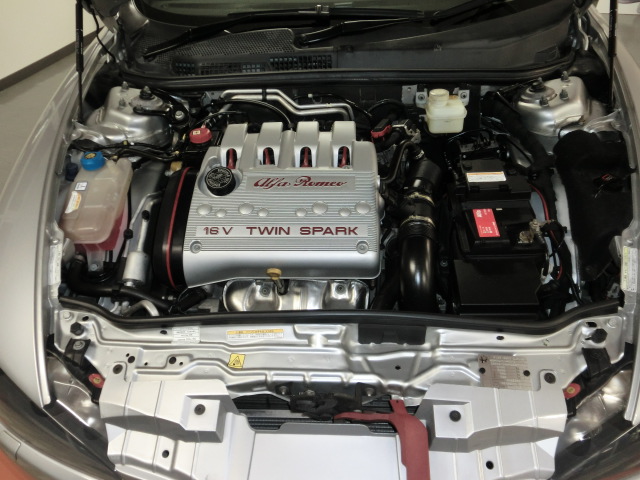
走行距離も、少な目なのもポイント!
ウキウキしてきますっ。
エンジンルームも
TOY CAR LANDのアルファロメオなんで
ピッカピカなのは当たり前どすぇーっと京都弁・・・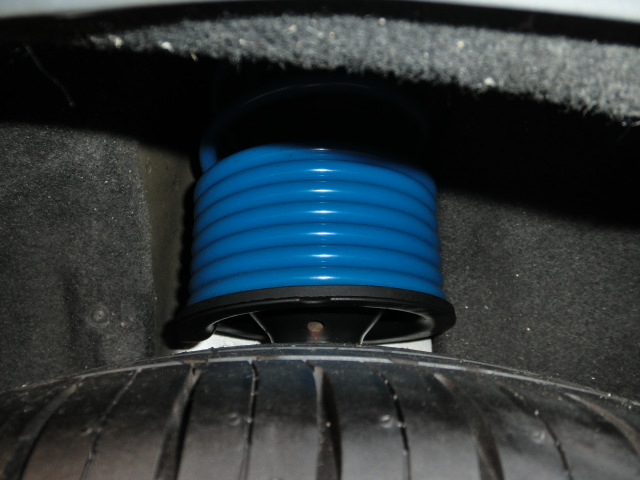

足回りも、リフレッシュして
走ると、ほんと気持ちいいんですよねー。
私好みのASSOパルティーレ MODA。
16インチのゴツゴツしない走りは
じぇんとるまん な走り?で・・・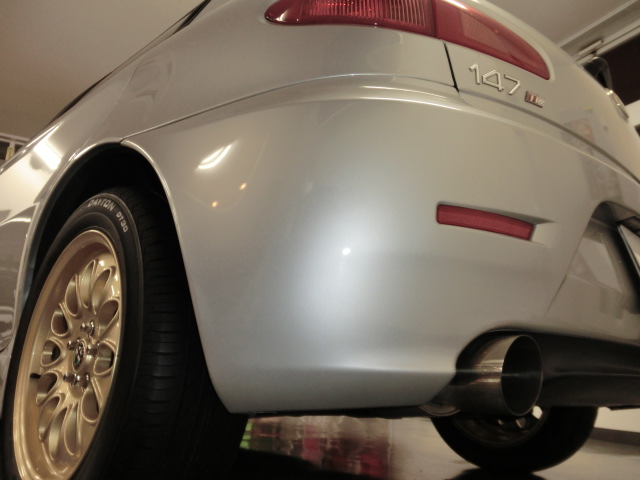

店頭まだ147万円で展示しておりますが、
只今より!
127万円で!
サマーセール!第2弾!
始まり・・・始まり〜!
一台限りの特価車なので
お早目!必見!どすェー。
ノリノリの栗東店でしたー。
お見積りのご請求はコチラ
PS:他にも
特別価格のお買い得車が
隠れておりまーす。
次回、アップさせていただこうと思っておりますが、、、
先に見つけていただけますか?
売り切れごめんのラッキー!
この記事へのコメント
It has gained attention for its relatively mild side effect profile compared to other steroids, which makes it attractive to
athletes and bodybuilders who want to increase muscle mass, improve strength, or enhance athletic performance without
excessive androgenic consequences. Despite this, users should still be aware of potential health risks, especially if used in high doses or over extended periods.
Anavar for Women: Benefits
Women who use Anavar can experience several positive outcomes when taken responsibly.
Because the drug is a weaker androgen compared to many other anabolic steroids, women often find it easier to avoid virilization effects such as deepening of the voice, excessive hair growth,
or significant changes in menstrual cycles. Key benefits
include:
Lean muscle gain: Anavar promotes protein synthesis while preserving lean body mass.
This helps users build a toned physique rather than accumulating bulky bulk.
Fat loss: The steroid can increase basal metabolic rate and support fat oxidation, especially when combined with a
calorie-controlled diet and regular training.
Enhanced recovery: Users report quicker healing of muscle damage after intense workouts, allowing
for more frequent sessions or higher training volumes.
Improved endurance: Some women notice increased stamina during cardio sessions or high-repetition resistance training.
Anavar for Women: Dosage
Dosage recommendations vary widely depending on goals, experience level, and tolerance.
For most female users seeking modest gains without significant side effects,
a conservative range is typically advised:
Starter dose: 5 to 10 mg per day. This low dosage minimizes the risk of estrogenic or androgenic side effects while still providing noticeable
improvements in muscle tone.
Intermediate dose: 15 to 20 mg per day. Women at this level may
experience more pronounced lean mass gains and fat loss,
but careful monitoring for mood changes or menstrual irregularities is essential.
Advanced dose: 25 to 30 mg per day. Higher doses are rarely
recommended for women because the risk of virilization increases markedly above 20
mg.
Most cycles last between four to six weeks. A typical regimen might involve taking Anavar every
other day (every other day dosing) or a daily schedule if higher dosages are used.
After completing a cycle, it is prudent to allow at
least two months before starting another bout of steroids to give the body time to recover.
Alternatives to Anavar for Women
If a woman wishes to avoid steroids altogether but still aims
for similar outcomes, several natural supplements and legal alternatives exist:
Creatine monohydrate: Supports short bursts of high-intensity activity and promotes water retention within muscle cells, creating a fuller appearance.
Beta?alanine: Buffers lactic acid buildup during intense
training, improving endurance and reducing fatigue.
Branched-chain amino acids (BCAAs): Aid in protein synthesis and reduce muscle soreness post-workout.
Plant-based protein powders: Provide essential amino acids without the hormonal effects of steroids.
Natural anabolic herbs such as ashwagandha or tongkat ali may modestly boost testosterone levels, though their efficacy is considerably lower
than Anavar.
Muscle Growth and Strength
Anavar’s mechanism for muscle growth centers on its ability to increase nitrogen retention in skeletal muscle tissues.
By binding to androgen receptors, it encourages
protein synthesis while simultaneously inhibiting the breakdown of muscle proteins.
The net result is a positive nitrogen balance that translates
into lean muscle hypertrophy over time.
Strength gains are typically reported within 3?4 weeks of
consistent use. This effect arises from both enhanced muscular endurance and an increased capacity for higher training loads.
For athletes, this means they can lift heavier weights
or perform more repetitions before reaching fatigue. In the
long term, sustained strength improvements may also
contribute to better joint stability and reduced injury risk.
While Anavar is generally considered safer than many other anabolic
steroids, it still carries potential side effects:
Hormonal disturbances: Even low doses can suppress natural testosterone production in men; women may experience menstrual irregularities.
Liver stress: As an oral steroid, Anavar places a burden on the liver.
Liver function tests should be monitored if usage extends beyond 4?6 weeks.
Cardiovascular strain: Users may notice changes in lipid profiles, including reduced HDL cholesterol and increased LDL cholesterol, which could elevate heart disease risk over time.
Mood alterations: Some users report mood swings or irritability, likely tied to hormonal fluctuations.
For those who decide to incorporate Anavar into their training plan, it is
vital to approach usage with caution. Adequate medical supervision, regular bloodwork, and adherence to
recommended dosages can mitigate many risks while still allowing individuals?especially women?to
reap the benefits of lean muscle growth, enhanced strength, and improved body composition.
**Methyldienolone (also known as methadiene?1?en?17β?ol)**
*Trade names:* **Anastrozole, Antrazol**, and others in various countries.
---
## 1. Overview
| Item | Details |
|------|---------|
| **Class** | Synthetic anabolic?androgenic steroid (AAS)
|
| **Molecular Formula** | C??H??NO? |
| **IUPAC name** | 17β?(2?methylpropyl)-1,4?dihydrocyclohex-3?ene?4?ol |
| **CAS Number** | 1207?68?5 |
| **Key Properties** | Lipophilic; orally active;
metabolized primarily in the liver to inactive metabolites
|
---
## 2. Chemical Structure
Methenolone is a derivative of testosterone lacking an oxidation at C-17α, giving it lower androgenic potency but higher anabolic
activity relative to its parent compound.
### Key Functional Groups:
| Position | Group | Biological Relevance |
|----------|-------|----------------------|
| **C3** | Hydroxyl (-OH) | Required for receptor binding |
| **C4** | Secondary alcohol (methanol) | Influences potency and metabolism |
| **C17** | Ketone (=O) | Maintains anabolic activity |
---
## 3. Mechanism of Action
Methenolone acts as an agonist at the androgen receptor (AR).
Once bound, it induces a conformational change that allows recruitment of coactivators and transcriptional
machinery to drive expression of genes involved in:
- **Protein synthesis**: ↑ muscle growth
- **Anabolic metabolism**: ↑ glycogen storage, ↓ protein breakdown
Unlike some anabolic steroids, methenolone has relatively low androgenic activity, making it less likely to cause virilization side effects.
---
## 4. Pharmacokinetics
| Parameter | Value |
|-----------|-------|
| Absorption | Oral bioavailability ~50% (due to first?pass metabolism) |
| Distribution | Plasma protein binding ?80% (primarily albumin) |
| Metabolism | Hepatic, mainly via CYP3A4; metabolites are glucuronidated and sulfated |
| Elimination | Primarily renal excretion of conjugates |
| Half?life | 2?3?h for the parent compound; active metabolites may extend apparent duration |
Because of rapid metabolism, therapeutic dosing is often required multiple times per
day.
---
## Therapeutic Applications
| Indication | Typical Dose & Regimen (Adults) | Rationale |
|------------|---------------------------------|-----------|
| **Chronic pain management** (e.g., osteoarthritis, low back pain) | 20?40?mg TID or PRN |
Provides analgesia without the full potency of opioid agonists.
|
| **Migraine prophylaxis** | 10?30?mg BID | Modulates central nociceptive pathways.
|
| **Acute postoperative pain** (short?term)
| 20?mg q6h as needed | Rapid onset, short duration limits accumulation. |
*Note: Doses may vary; always consult clinical guidelines.*
---
## Pharmacokinetic Properties
| Parameter | Typical Value (oral) | Comments |
|-----------|---------------------|----------|
| **Absorption** | Peak concentration in 30?60?min | Good oral bioavailability (~70?%).
|
| **Distribution** | Volume of distribution ? 2.5 L/kg | Crosses blood?brain barrier moderately.
|
| **Metabolism** | Primarily CYP3A4 → inactive metabolites | Minor contribution from
CYP2D6. |
| **Elimination** | Half?life ? 2?3?h (steady?state) | Renal excretion ~20?% unchanged.
|
| **Protein Binding** | ~90?% | High, but displacement possible with other drugs.
|
---
## 4. Potential Interactions and Contraindications
| Category | Interaction / Risk | Clinical Relevance |
|----------|--------------------|---------------------|
| **CYP3A4 Inhibitors** (e.g., ketoconazole,
ritonavir) | ↑ Loxapine plasma → ↑ neurotoxicity (seizures, extrapyramidal).
| Monitor for signs of CNS toxicity; consider
dose reduction or alternative antipsychotic. |
| **CYP3A4 Inducers** (e.g., rifampin, carbamazepine) | ↓ Loxapine
levels → ↓ efficacy, possible relapse. | Increase dose cautiously; monitor symptom control.
|
| **Other Antipsychotics** (especially haloperidol) | Additive EPS risk due to dopamine blockade.
| Use lowest effective doses; monitor for rigidity and tremor.
|
| **Anticholinergic Drugs** (e.g., diphenhydramine,
oxybutynin) | Worsen dry mouth, constipation, urinary retention. | Prefer non?anticholinergic alternatives; manage
side effects with bilevel therapy. |
| **Cardiac Conduction Agents** (QT?prolonging drugs) | QT prolongation synergy.
| Baseline ECG before adding any QT?extending drug;
monitor electrolytes. |
---
## 6. Practical Recommendations for Clinical Use
| Step | Action | Rationale |
|------|--------|-----------|
| **Baseline Assessment** | ? Physical exam (BMI, waist circumference)
? Blood pressure, fasting glucose/HbA1c, lipid panel
? Baseline weight and waist measurement
? Review medication list for potential interactions | Establishs starting point &
identifies comorbidities that may influence treatment choice.
|
| **Set Goals** | ? Weight loss of 5?10?% in first 6
months (?2?kg/month)
? Waist circumference reduction >5?cm | Goal
setting enhances motivation and aligns with evidence-based targets for
health benefit. |
| **Choose Intervention** | ? Lifestyle modification (diet + exercise)
is first-line
? Add pharmacotherapy if <5?% loss after 3?6 months or BMI ?35?kg/m?
? Consider surgery when BMI???40?or???35 with comorbidity and >10?% weight
loss goal | Structured decision tree optimizes treatment intensity per
patient profile. |
| **Implement Lifestyle Plan** | ? Calorie?restricted diet (500?750?kcal deficit)
? ?150?min/week moderate activity, strength training 2×/week
? Behavior therapy: self?monitoring, problem solving, relapse prevention
? Monitor weight weekly, adjust plan accordingly | Evidence shows that a combination of dietary restriction, physical activity and behavioral support yields the greatest sustained loss.
|
| **Monitor Progress** | ? Weigh weekly (at same time/day)
? Record food intake & activity (apps or diary)
? Re?assess energy needs every 4?6?weeks
? Track psychosocial outcomes: mood, sleep, self?efficacy
? Adjust caloric deficit if loss plateaus (< 0.5?kg/yr) or side effects appear | Regular feedback and adjustment keep motivation high and prevents metabolic adaptation. |
| **Address Plateaus & Maintenance** | ? Re?calculate maintenance calories (TDEE + activity)
? Shift from deficit to maintenance: increase carbs/fats slightly, monitor weight <1?% change per month
? Use "re?feed" or "refeed" days if energy low (increase carbs 10?20?%)
? Continue behavioral strategies (meal planning, self?monitoring) | Transition to maintenance reduces risk of weight regain and sustains metabolic health. |
| **Monitoring & Evaluation** | ? Weight: weekly
? Body composition: monthly
? Labs: every 6 months
? Lifestyle adherence: dietary logs quarterly
Adjust plan based on data (e.g., if fat?free mass decreases >2?% →
reduce protein or adjust energy) | Data?driven adjustments keep the plan personalized
and effective. |
---
## How to Use This Sheet
| Step | Action |
|------|--------|
| 1 | **Set up a baseline**: Enter your current weight, height, age,
sex, activity level, and any lab results. |
| 2 | **Calculate BMR & TDEE**: The sheet will compute these automatically.
|
| 3 | **Define goals**: Choose "Muscle gain" or "Fat loss." Adjust
the energy deficit/surplus in the "Energy Adjustment" column accordingly (e.g., +250 kcal for lean muscle gain,
-500 kcal for fat loss). |
| 4 | **Set macronutrient ratios**: Input
desired protein % and choose a carb ratio; the sheet calculates grams.
|
| 5 | **Review totals**: Ensure total calories match your target energy adjustment.
|
| 6 | **Track progress**: Record actual intake each day
(optional). Compare with targets to see if you’re on track.
|
| 7 | **Adjust as needed**: If you’re not seeing desired changes,
tweak the protein %, carb ratio, or calorie adjustment and
re?calculate. |
---
## 5. Example Calculation
Let’s walk through a concrete example:
### Scenario
- **Goal**: Lose weight at ~0.5?kg/week.
- **Current Body Weight**: 80?kg.
- **Estimated Maintenance Calories**: ~2,300?kcal/day (based on activity level).
- **Target Deficit**: 500?kcal/day → target intake = 1,800?kcal/day.
### Desired Macronutrient Distribution
- **Protein**: 2.5?g/kg?×?80?kg = 200?g protein/day.
- **Fat**: 25% of total calories → 0.25?×?1,800?=?450?kcal from fat
→ 45?g fat (since 9?kcal/g).
- **Carbohydrates**: Remaining calories after accounting for protein and fat.
Compute protein calories:
200?g?×?4?kcal/g = 800?kcal.
Compute fat calories: already 450?kcal.
Total so far: 1,250?kcal.
Remaining calories to reach total of 1,800?kcal: 1,800???1,250?=?550?kcal from carbs.
Carb grams: 550?/?4???138?g.
Thus nutritional composition:
- Protein: 200?g (800?kcal)
- Fat: 50?g (450?kcal)
- Carbohydrate: ~138?g (550?kcal)
Total energy: 1,800?kcal per day. This meets a typical high?intensity training requirement of roughly
15?18?kcal/kg for athletes weighing 70?75?kg.
**Additional Practical Advice**
| Component | Typical Food Sources | Portion Example |
|-----------|----------------------|-----------------|
| Protein | Chicken breast, lean beef, fish, eggs, tofu,
legumes | 200?g cooked chicken (?4?oz) = 55?g protein |
| Carbs | Rice, pasta, potatoes, oats, whole?grain bread |
150?g cooked rice ? 30?g net carbs |
| Fats | Avocado, olive oil, nuts, seeds | 1 tablespoon olive oil = 14?g fat |
**Remember:** Meal timing matters. Aim to consume the bulk of your carbohydrates within **2?3
hours before training** and a balanced protein?carb meal in the **30 minutes after** to aid
recovery.
---
### 4?? 7-Day Training Plan (Beginner)
| Day | Workout | Duration / Intensity |
|-----|---------|----------------------|
| **Mon** | Rest or light mobility walk | ? |
| **Tue** | HIIT Session 1: 10?min warm?up →
20?sec sprint / 40?sec jog (repeat ×8) →
5?min cool?down | 30?min total |
| **Wed** | Strength Circuit A:
? Squats ? 3×12
? Push?ups ? 3×10
? Bent?over rows ? 3×12 (use kettlebell or dumbbell)
| 25?min |
| **Thu** | HIIT Session 2: 10?min warm?up →
30?sec sprint / 30?sec jog (repeat ×8) →
5?min cool?down | 30?min total |
| **Fri** | Strength Circuit B:
? Lunges ? 3×12 each leg
? Plank ? 3×45?s
? Shoulder press ? 3×12 | 25?min |
| **Sat** | Rest or light activity (walk, gentle yoga) | 0?30?min |
| **Sun** | Rest or light activity | 0?30?min |
*Note:* Adjust the number of repetitions and sets to match your current strength level.
If you feel fatigued or sore after a session, consider reducing volume or taking
an extra rest day.
---
## 4. Putting It All Together ? Sample Weekly Plan
| Day | Warm?up (5?10?min) | Main Session |
|-----|--------------------|--------------|
| **Mon** | Light jog + dynamic leg swings | **Sprint session A**
(6 × 60?m, walk back recovery) |
| **Tue** | Bodyweight circuit + short strides | Rest or gentle active recovery (walking, stretching) |
| **Wed** | Plyo drills + light jog | **Sprint session B** (8 × 30?s on?time,
rest intervals) |
| **Thu** | Mobility work + short strides | Rest or active recovery |
| **Fri** | Warm?up + light jog | **Sprint session C** (5 × 80?m at sub?max pace,
walk back) |
| **Sat** | Optional mobility/foam rolling | Rest |
| **Sun** | Light walking or recreational activity | Rest |
- *Warm?ups* before each sprint set: 10?15
min of light cardio → dynamic stretches
→ strides (4?6 × 60?m at ~85% effort) with full recovery.
- *Cool?downs*: 5?10 min light jog/walk + static
stretching for hamstrings, calves, glutes.
### 3.2 Progression & Variation
| Week | Session Focus | Intensity/Volume |
|------|---------------|------------------|
| 1?4 | Base building | 8?12 sprints of 80?m; 90?% effort; rest 3?5 min |
| 5?6 | Speed endurance | 10?14 sprints of 60?m; 95?% effort; rest 2?3 min |
| 7?8 | Power & recovery | 12 sprints of 70?m; 100?% effort; rest 4?5 min |
- **Technique sessions**: 1?2 times per week, focusing on start mechanics and stride efficiency.
- **Recovery drills**: Light jogging or walking after sprint blocks to promote blood flow.
#### 3.4. Weekly Schedule (Example)
| Day | Activity |
|-----|----------|
| Mon | Warm?up + Technique (starts) + 6×60?m
at 95% effort, 2?min rest |
| Tue | Strength training (upper body & core) + light cardio |
| Wed | Warm?up + Sprint block (10×20?m, full force,
3?min rest) |
| Thu | Mobility work + light jog |
| Fri | Warm?up + Technique + 8×40?m at 90% effort, 4?min rest |
| Sat | Rest / optional yoga |
| Sun | Strength training (lower body & core) + light cardio |
---
## **5. Sample 6?Week Training Plan**
| Week | Monday | Tuesday | Wednesday | Thursday | Friday | Saturday
| Sunday |
|------|--------|---------|-----------|----------|--------|----------|--------|
| 1 | Warm?up, technique (8×20?m) + 4×30?m @ 80% effort | Lower?body
strength (squats, lunges, deadlifts) + core | Warm?up, technique (6×25?m) + 3×50?m @ 85% effort | Light swim, mobility |
Warm?up, technique (8×20?m) + 4×30?m @ 80% effort | Rest
| Upper?body strength (bench press, rows) + core |
| 2 | Warm?up, technique (10×15?m) + 5×25?m @ 75% effort | Lower?body
strength (heavy lifts) + core | Warm?up, technique (8×20?m)
+ 4×40?m @ 80% effort | Light swim, mobility | Warm?up, technique (10×15?m) +
5×25?m @ 75% effort | Rest | Upper?body strength
(heavy lifts) + core |
| 3 | Warm?up, technique (12×10?m) + 6×20?m @ 70%
effort | Lower?body strength (moderate) + core | Warm?up, technique (10×15?m) + 5×30?m @ 75% effort | Light swim, mobility | Warm?up, technique (12×10?m) + 6×20?m
@ 70% effort | Rest | Upper?body strength (moderate) + core |
| 4 | Warm?up, technique (15×8?m) + 7×18?m @ 65% effort | Lower?body strength (light) + core | Warm?up, technique (12×10?m) + 6×25?m @ 70%
effort | Light swim, mobility | Warm?up, technique (15×8?m) + 7×18?m @ 65%
effort | Rest | Upper?body strength (light) + core |
**Key Points**
* **Warm?ups** are the same for every session: a short swim or walk
and a few light body?weight movements.
* The *main set* is the only part that changes.
It always uses the same structure ? 3?4 sets
of 8?10 repetitions, one rest minute between sets ? but the exercises differ (rows
vs. presses, squats vs. lunges).
* All other aspects (sets, reps, rest, warm?up) stay constant, so you can build a "template" and then swap
in a new exercise for each workout.
---
## 3.?Putting It All Together ? A Sample Program
Below is a **four?week beginner program** that follows the principles above.
You’ll train three times per week (e.g., Mon/Thu/Sun).
Each session lasts about 45?50 minutes.
| Week | Day | Exercise | Sets | Reps | Rest |
|------|-----|-------------------|------|------|------|
| 1-2 | 1 | Goblet Squat | 3 | 8-10 | 90?s |
| | | Bench Press (or Push?ups) | 3 | 8-10 | 90?s |
| | | Bent?Over Row | 3 | 8-10 | 90?s |
| | 2 | Deadlift (light) | 3 | 6-8 | 120?s |
| | | Overhead Press | 3 | 8-10 | 90?s |
| | | Pull?ups/Chin?ups | 3 | max | 90?s |
| | 3 | Squat (bodyweight or light) | 3 | 10-12
| 90?s |
| | | Plank | 3 | 45?s | 60?s |
| | | Row (band or dumbbell) | 3 | 10-12 | 90?s |
- **Progression**: When you can do the upper?limit of reps
comfortably, add a small weight (2?5?lb) or
increase volume.
- **Rest**: 60?90?seconds between sets keeps the heart rate up and mirrors typical "bodyweight" training.
---
### 4?? How to Incorporate Cardio into the Routine
1. **High?Intensity Interval Training (HIIT)**
- *Example*: 20?sec sprint / 40?sec walk →
repeat 8?10 times (total ~5?6?min).
- Fits easily after the weight?lifting portion or as a separate session.
2. **Circuit Style Cardio**
- After each set of weights, add a short cardio burst:
* 30?sec jump rope,
* 30?sec burpees,
* 30?sec high knees.
- Keeps heart rate elevated and burns extra calories.
3. **Steady?State Cardio** (optional)
- If time allows, a 15?20?min jog or bike ride can be added on non?lifting days.
---
## Sample Weekly Plan
| Day | Workout Focus |
|-----|---------------|
| Mon | Upper?Body Strength + 5?×?30?sec cardio burst after each set |
| Tue | Lower?Body Strength + 5?×?30?sec cardio burst after each set |
| Wed | Rest or light mobility/stretching |
| Thu | Upper?Body Strength (different rep scheme) + cardio bursts |
| Fri | Lower?Body Strength + cardio bursts
|
| Sat | Optional active recovery: brisk walk, yoga,
or a 20?min bike ride |
| Sun | Full rest |
**Tip:** Keep the total workout time under 45?minutes by adjusting rest
periods between sets. A 1?2 minute rest is usually
sufficient for most people.
---
## What if I’m not comfortable lifting heavy weights?
- **Start lighter:** It’s okay to begin with a weight that feels "easy." The
goal is gradual progression.
- **Use the "no pain, no gain" mindset?** Not really. Avoid any
sharp or burning pains. If you feel discomfort beyond mild muscle fatigue, stop
and reassess your form or load.
---
## How many sets should I do?
A common recommendation for beginners aiming
for strength and hypertrophy is:
- 3?4 sets per exercise
- Keep the last set to near failure (i.e., you can’t perform
another full rep with proper form).
If you’re only doing one exercise, try 3?4 sets. If you add more exercises later,
consider reducing sets to maintain intensity.
---
## What about rest periods?
For a balance of strength and muscle growth:
- Rest 60?90 seconds between sets.
- This allows sufficient recovery while still challenging the
muscle.
If you’re training for pure endurance or cardio fitness, shorter rests (30?45 sec) may be appropriate.
---
## How many reps per set?
A typical rep range that supports both hypertrophy and strength is:
- **8?12 reps** per set
- If you can do more than 12, increase the weight.
- If you struggle to hit 8, reduce the weight.
If you prefer heavier weights for pure strength, aim for **4?6 reps** with longer rest periods
(2?3 min). For endurance or toning, use higher reps (**15+**) and lighter
loads.
---
## Sample Structured Routine
Below is an example of a structured routine that balances rep range, sets, and rest:
| Exercise | Sets | Reps | Rest |
|----------|------|------|------|
| Push?ups (modified) | 3?4 | 8?12 | 60?90 sec |
| Bent?over rows (dumbbell or barbell) | 3?4 | 8?12 | 60?90 sec |
| Body?weight squats | 3?4 | 12?15 | 60 sec |
| Plank | 3 | 30?45 sec | 30 sec |
**Notes:**
- If you’re doing a full?body circuit, reduce rest to 30?45?sec to
keep the heart rate up.
- Use progressive overload (more reps, more sets, heavier weight) each week
to continue improving.
---
## 4?? How Much Rest Is Needed Between Sets?
| Training Goal | Recommended Rest |
|---------------|------------------|
| **Hypertrophy / Muscle Growth** | 60?90?sec (1?1.5?min) |
| **Strength & Power** | 2?5?min (or longer if using heavy loads)
|
| **Endurance or Conditioning** | 30?45?sec, often with no
rest between exercises |
**Key Takeaway:** For a balanced program that improves both strength and size,
aim for about **90?seconds** of rest after each set.
This allows you to recover enough to maintain form on the next set while still challenging
your muscles.
---
## 5?? Putting It All Together ? A Sample Strength?Building Routine
Below is an example of a beginner?to?intermediate strength program that incorporates the principles discussed:
| Day | Exercise (Sets × Reps) | Load (%1RM) |
|-----|------------------------|-------------|
| **Monday** | Squat | 4?×?6 @ 70?75% |
| | Bench Press | 4?×?6 @ 70?75% |
| | Bent?over Row | 3?×?8 @ 65% |
| | Pull?ups (assisted if needed) | 3?×?max |
| **Wednesday** | Deadlift | 3?×?5 @ 75?80% |
| | Overhead Press | 4?×?6 @ 70% |
| | Lateral Raises | 3?×?12 |
| | Plank | 3?×?60?s |
| **Friday** | Front Squat | 4?×?6 @ 70% |
| | Bench Press | 4?×?6 @ 70% |
| | Barbell Row | 4?×?8 |
| | Face Pulls | 3?×?15 |
*Notes:*
- *Warm?up sets are omitted for brevity; perform 2?3 light sets (e.g.,
50?% 1RM) before the working set.*
- *Progression is achieved by adding ~5?kg to the
bar once you can complete all reps at a given weight.*
---
### 4. How to Train
| Phase | Focus | Typical Reps | Sets | Rest |
|-------|-------|--------------|------|------|
| **Strength** | Maximize load, lower volume | 3?5 reps | 3?6 sets | 2?3?min |
| **Hypertrophy** | Moderate load, moderate volume | 8?12 reps |
3?4 sets | 60?90?s |
| **Endurance** | Lower load, high reps | 15?20+ reps | 2?3 sets | 30?60?s |
*Example:* A strength session on the bench press might be 5×5 at ~80% 1RM with 3?minute rests.
An endurance session could be 3×15 at 50% 1RM with 45?second rests.
---
## 4 ? How many sets should you do?
The total number of **sets per muscle group** depends
on the goal:
| Goal | Sets/Week (per muscle) |
|------|------------------------|
| Hypertrophy (muscle growth) | 10?20 |
| Strength | 6?12 |
| Endurance | 8?15 |
*Example:*
If you bench press **3 times a week** and perform **4 sets
per session**, that’s **12 total sets per week**?within the hypertrophy range.
---
## 5 ? How many repetitions should you do?
Repetition ranges vary with training goals:
| Goal | Reps per Set |
|------|--------------|
| Strength | 1?6 |
| Hypertrophy | 6?12 |
| Endurance | 15+ |
*Guideline:*
- **Strength**: Use heavier loads (80?90% of your one?rep max).
- **Hypertrophy**: Moderate load (60?75%) with fatigue in the last few reps.
- **Endurance**: Light load (40?50%), high reps.
---
## 6 ? How long should each training session be?
Session length depends on intensity and volume:
| Intensity | Approx. Duration |
|-----------|------------------|
| High?intensity/volume | 60?90 minutes |
| Moderate | 45?60 minutes |
| Low intensity | 30?45 minutes |
Remember to include warm?up (5?10?min) and cool?down/stretching.
---
## 7 ? How many sets per muscle group?
A common recommendation is:
- **Strength training**: 3?4 sets per exercise.
- **Hypertrophy**: 8?12 repetitions × 3?6 sets total per muscle
group.
- **Recovery/maintenance**: 1?2 sets if time limited.
Total weekly volume for each muscle group typically
ranges from 10?20 sets across sessions, but
can vary based on training level and goals.
---
## 8 ? How many reps per set?
- **Strength (lower rep)**: 1?5 reps.
- **Hypertrophy**: 6?12 reps.
- **Endurance/Recovery**: 15+ reps (often with lighter load).
Higher repetitions generally use lighter loads, whereas lower
repetitions allow heavier weights.
---
## 9 ? How many sets per muscle group?
A general rule is:
- **Beginner**: 1?2 sessions per week per muscle
group, 3?4 sets each session.
- **Intermediate**: 2?3 sessions per week, 4?6 sets each.
- **Advanced**: 3+ sessions, 8?12 sets total per week.
Total weekly volume (sets × reps) should increase gradually to stimulate adaptation.
---
## 10 ? How many days per week?
Depends on goals:
- **Strength / Powerlifting**: 3?4 days (e.g., squat day,
bench day, deadlift day, accessory).
- **Hypertrophy / Bodybuilding**: 5?6 days split by muscle groups.
- **General Fitness**: 2?3 days full-body workouts.
Consistency outweighs intensity; adjust to fit lifestyle.
---
## 11 ? How many reps per set?
Typical guidelines:
| Goal | Reps/Set |
|---------------|----------|
| Strength | 1?5 |
| Hypertrophy | 6?12 |
| Endurance | 15+ |
Progressive overload (add weight, reps, or sets) is key.
---
## 12 ? How many sets per exercise?
Common recommendations:
- **Strength**: 3?6 sets
- **Hypertrophy**: 3?5 sets
- **Endurance**: 2?4 sets
Ensure volume aligns with recovery capacity.
---
## 13 ? What is the best rest interval between sets?
- **Strength**: 2?5 min
- **Hypertrophy**: 30?90 sec
- **Endurance**: 15?60 sec
Adjust based on goals and individual response.
---
## 14 ? How many minutes should a workout last?
A balanced full?body session typically lasts **45?75?min**, including warm?up, main sets,
and cool?down. Adjust duration to match training volume and schedule constraints.
---
## 15 ? How often do I need to train each muscle group
per week?
- **General fitness**: 1?2 times/week
- **Hypertrophy/strength focus**: 2?4 times/week (split
or full?body)
- **Endurance or rehabilitation**: frequency depends on protocol but usually 3?5 sessions/week
The optimal frequency balances volume, intensity, and recovery.
---
### Quick Summary Table
| Parameter | Typical Value |
|-----------|---------------|
| Warm?up | 10?min light cardio + mobility drills |
| Set range per muscle group | 1?4 sets |
| Reps per set | 8?12 (hypertrophy) / 4?6 (strength) / 15+ (endurance) |
| Rest between sets | 60?90?s (hypertrophy), 2?3?min (strength) |
| Session length | 45?75?min |
| Frequency | 2?3×/week per muscle group |
---
**Takeaway:**
For most people, a structured routine that includes 1?4 sets of 8?12 reps for
each major muscle group, performed 2?3 times per
week with moderate rest intervals, and lasting about an hour
per session, offers the best balance between effectiveness,
safety, and convenience. Adjust volume or intensity based
on progress, goals, and recovery ability.


